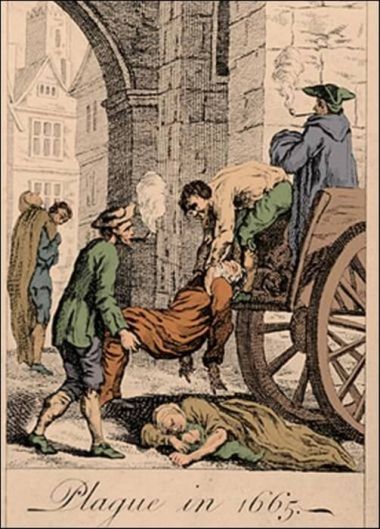Bubonic plague—rare disease that killed 50 million people in 14th century—victimises teen girl in Oregon

A 16-year-old girl in Oregon has been diagnosed with bubonic plague, the eighth case in the state since 1995.
Plague is thought to be the cause of the Black Death that ravaged Asia, Europe, and Africa in the 14th century and killed an estimated 50 million people. According to historical sources, the disease wiped about 25 to 60 percent of the population in Europe at that time.
The Oregon Health Authority's Public Health Division and the Crook County Public Health Department have confirmed the latest bubonic plague case in the US.
Health authorities said the girl is believed to have been infected by the disease from a flea bite during a hunting trip near Heppner in Morrow County that started on Oct. 16.
The girl fell ill on Oct. 21 and was taken to a hospital in Bend on Oct. 24 where she is now recovering at the intensive care unit.
"Many people think of the plague as a disease of the past, but it's still very much present in our environment, particularly among wildlife," said Dr. Emilio DeBess, state public health veterinarian in the Public Health Division's Acute and Communicable Disease Prevention Section. "Fortunately, plague remains a rare disease, but people need to take appropriate precautions with wildlife and their pets to keep it that way."
The Oregon Public Health and the Centers for Disease Control and Prevention epidemiologists are working with health officials in Crook, Deschutes and Morrow counties to investigate the illness.
No other persons are believed to have been infected, the Oregon Public Health said.
Plague is rare in Oregon and is treatable with antibiotics if caught early. Only eight human cases have been diagnosed in the state since 1995. No deaths have been reported.
Health authorities warned that plague is an infectious bacterial disease that is carried by squirrels, chipmunks, and other wild rodents and their fleas.
When an infected rodent becomes sick and dies, its fleas can carry the infection to other warm-blooded animals or humans through bites.
DeBess said people should avoid any contact with wild rodents and they should never feed squirrels, chipmunks or other rodents in picnic or campground areas, and never touch sick or dead rodents.
According to the state health department, plague symptoms typically develop in one to four days after exposure and include fever, chills, headache, weakness, and a bloody or watery cough.
There are three types of plague: bubonic, a lymph node infection; septicemic, a blood infection; and pneumonic, a lung infection. Bubonic plague is the most common form and is characterised by high fever, lethargy and swollen lymph nodes, most commonly in the neck and under the jaw. Infected lymph nodes may spontaneously abscess and drain.
Health authorities offer the following recommendations to prevent plague:
● Avoid sick or dead rodents, rabbits and squirrels, and their nests and burrows.
● Keep your pets from roaming and hunting.
● Talk to your veterinarian about using an appropriate flea control product on your pets.
● Clean up areas near the house where rodents could live, such as woodpiles, brush piles, junk and abandoned vehicles.
● Sick pets should be examined promptly by a veterinarian.
● See your doctor about any unexplained illness involving a sudden and severe fever.
● Put hay, wood, and compost piles as far as possible from your home.
● Don't leave your pet's food and water where mice can get to it.
Veterinarians and their staff are at higher risk and should take precautions when seeing suspect animal plague cases.











